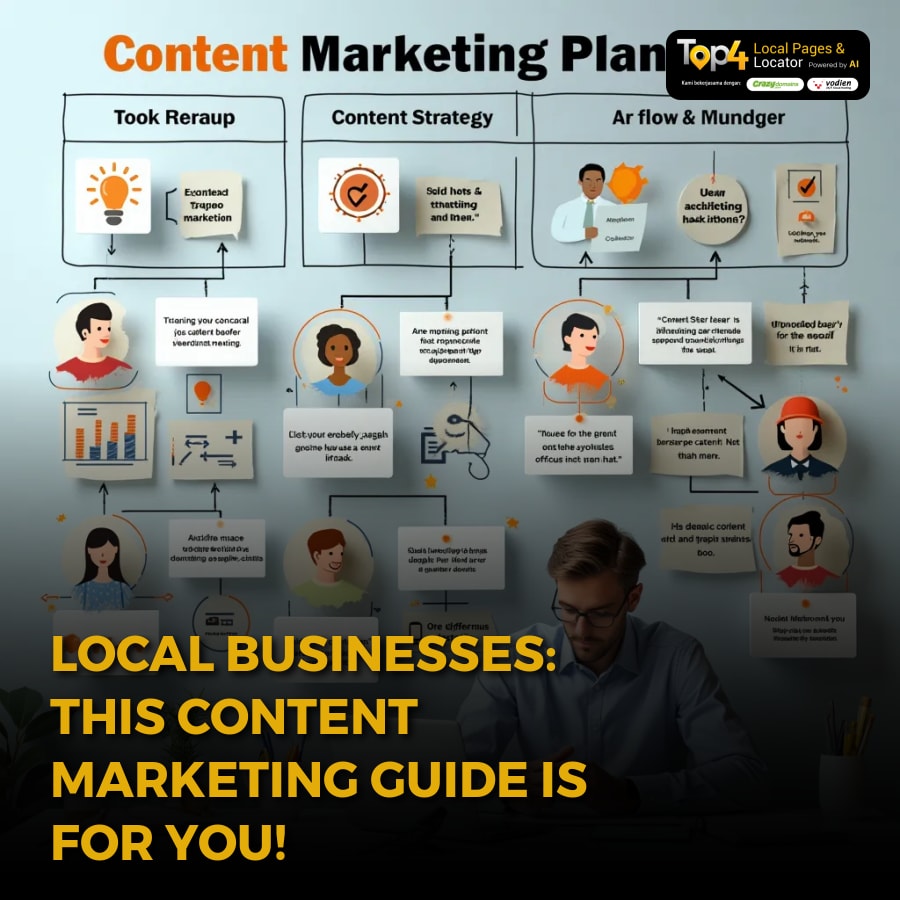Have you ever wondered why some local businesses thrive online while others seem to disappear into the digital abyss? The answer often lies in the strength of their content marketing plan. In today’s fast-paced digital world, an effective content strategy is not just beneficial – it’s essential for success. But how do you write a content strategy that genuinely works? How can you ensure that your marketing plan resonates with your target audience and drives results? These are the questions we’ll address today, shedding light on essential practices in creating a robust and effective content marketing plan.
Understanding the Importance of a Content Marketing Plan
At its core, a content marketing plan is a comprehensive roadmap that outlines your content strategy and how it aligns with your overall marketing plan. It provides a structured approach to creating, publishing, and managing content, ensuring consistency and relevance. For local businesses and franchise owners, this plan is an invaluable asset.
Why is this so important? Without a well-defined content marketing plan, your efforts are likely to be sporadic and disconnected. High-quality content tailored to your target audience can elevate your brand, build trust, and drive leads. However, achieving this requires meticulous planning and execution.
Components of a Content Marketing Plan
Defining Your Goals and Objectives
Your content strategy should begin with clear goals. Are you aiming to increase brand awareness, generate leads, or improve customer retention? By specifying your objectives, you provide a focused direction for your content efforts. Each piece of content should serve a purpose that aligns with these overarching goals.
Identifying Your Target Audience
Understanding who your audience is enables you to create content that speaks directly to their needs and interests. Develop detailed buyer personas that represent different segments of your customer base. Consider age, gender, location, interests, and pain points. This level of detail ensures that your content is relevant and appealing to those most likely to engage with your brand.
Conducting a Content Audit
A content audit helps you evaluate existing content assets and identify gaps. Assess what has been successful and what hasn’t resonated with your audience. This analysis will inform your future content strategy, ensuring your marketing plan builds on what works and discards what doesn’t.
Planning Content Creation
Once you have a clear understanding of your goals and audience, you can start planning content creation. Decide on the types of content that will best resonate with your audience – blog posts, videos, infographics, social media updates, etc. Develop a content calendar to schedule creation and publication, maintaining a consistent frequency to keep your audience engaged.
Distribution Channels and Promotion
Effective content distribution is key to reaching your target audience. Identify the channels where your audience is most active, whether that's social media platforms, email newsletters, or industry blogs. Utilising a mix of these channels ensures broader reach and increased engagement with your content.
Measuring Success and Adjusting Your Strategy
Monitoring and analysing the performance of your content marketing efforts is vital. Use analytics tools to track key metrics such as website traffic, conversion rates, and social media engagement. This data will highlight what’s working and what needs improvement. Regularly revising your strategy based on these insights ensures continued alignment with your goals.
Creating a Content Strategy Guide
So, what is a content strategy guide? It’s a detailed document that codifies your content marketing plan, guiding all content-related activities. First and foremost, clarify your mission statement – a concise declaration of what your content aims to achieve. Next, outline your content pillars, the core themes that will shape your content creation. This guide should also include workflows and processes, ensuring efficient content production and approval.
Lastly, incorporate a visual strategy. High-quality visuals enhance content attractiveness and engagement. Define guidelines for imagery, videos, and design elements consistent with your brand identity.
Common Content Marketing Pitfalls and How to Avoid Them
While crafting a content marketing plan, local businesses often face common pitfalls, including inconsistent posting schedules, ignoring SEO, and underutilising data analytics. To circumvent these, maintain a regular posting calendar, integrate SEO practices from the outset, and leverage data insights to refine your strategy continually. Understanding and addressing these pitfalls can significantly improve the effectiveness of your content marketing plan.
Conclusion
In today’s competitive digital landscape, a well-conceived content marketing plan can be the difference between online success and failure. By clarifying your goals, understanding your audience, and consistently monitoring your content's performance, you can significantly enhance your brand’s visibility and engagement. For local businesses and franchise owners, these practices become especially powerful tools in driving growth and customer loyalty.
At Top4 Marketing, our expertise can help you craft a local marketing plan that aligns with your business goals and local community needs. Let us assist you in maximising your online strategy. Visit Top4 Marketing blog for more insights to elevate your business to new heights. Contact us today and start your journey towards local marketing success.




























